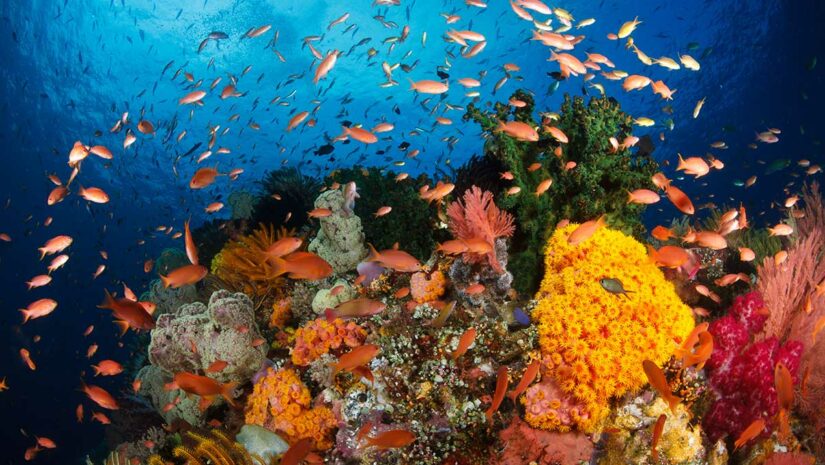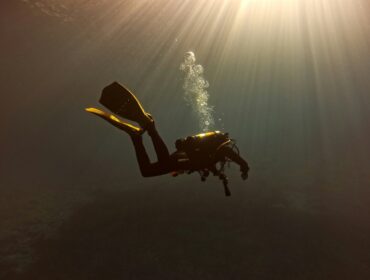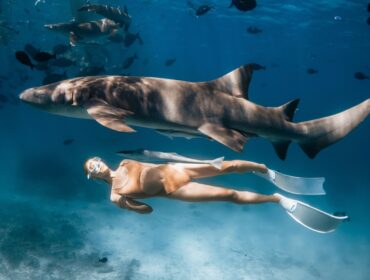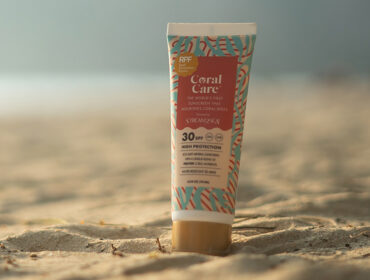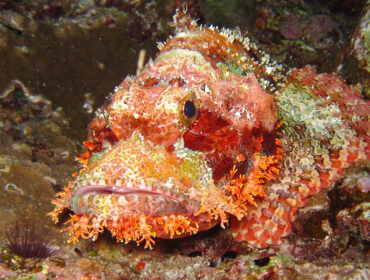The Coral Triangle, a bucket list dive destination, contains the greatest diversity of coral and marine creatures in the world. This article will tell you everything you need to know about diving in the Coral Triangle, including specific locations worth visiting. More than just a travel guide, we’ll dive into the critical conservation initiatives underway to safeguard this stunning area, as well as highlight best practices that divers should follow to ensure they become part of the solution, not the problem. Join us as we explore this healthy ecosystem.
What is the Coral Triangle?
The coral triangle is a unique area recognized worldwide as a center of marine biodiversity, supporting many fish and coral species and ecosystems. Many scuba divers, especially photographers, believe that the Coral Triangle offers the best scuba diving in the world.
Where is the Coral Triangle?
The Coral Triangle is a roughly triangular sea area that includes the tropical waters around Indonesia, Malaysia, the Philippines, Papua New Guinea, the Solomon Islands and East Timor. This huge sea area stretches between the Pacific and Indian Oceans and has two biogeographical regions: the Indonesia-Philippines region and the Far Southwest Pacific region. The Coral Triangle, often referred to as the “Amazon of the Sea,” is almost as large as the lower 48 states of the United States.
The Coral Triangle is a dynamic, lively environment that continues to amaze scientists, divers, and nature lovers. Its richness of marine life creates an ecological wonder that is both interesting to explore and critical to preserve. The Coral Triangle is certainly the gem of our oceans, with its stunning assortment of corals, fish, invertebrates, and symbiotic interactions.
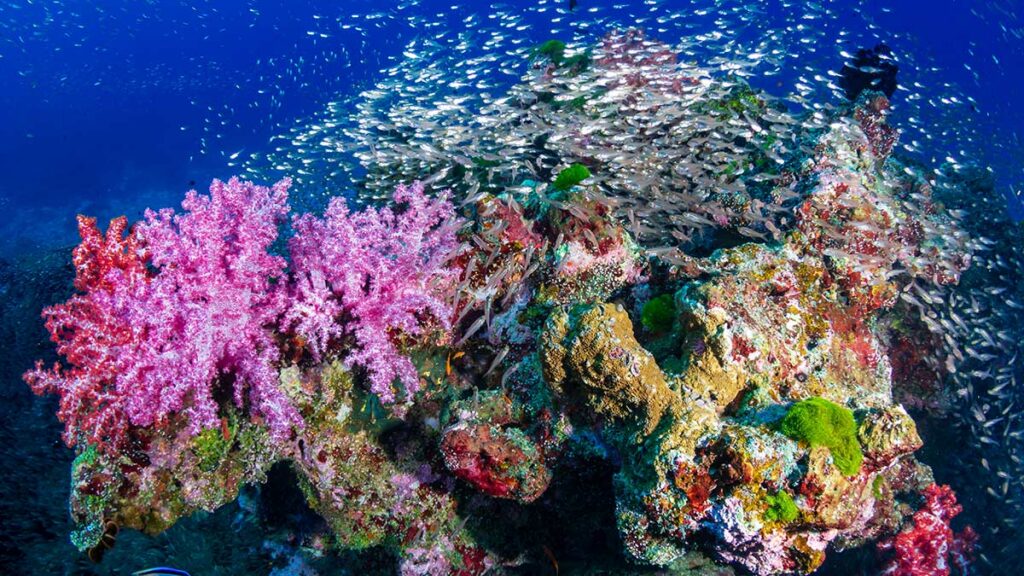
Diving into Biodiversity: Fascinating Marine Life in the Coral Triangle
The Coral Triangle is home to a stunning assortment of marine animals, covering all kinds of life from the smallest crustaceans to the largest fish.
Corals
The Coral Triangle is a living museum of coral diversity, home to over 600 species of reef-building corals, accounting for 76% of all known coral species. These corals serve as the ecosystem’s backbone, providing a habitat for a diverse range of marine species while also preserving the health of the surrounding environment.
Fish
With over 3,000 reef fish species, the Coral Triangle has an unmatched variety of forms, sizes, and colors. Large fish like the whale shark dwell peacefully together with tiny, colorful reef fish. Among these fish and corals are symbiotic relationships, such as cleaner fish that remove parasites from larger species, helping to maintain the ecosystem’s delicate balance.
Invertebrates
Invertebrates are abundant in the Coral Triangle. With approximately 950 mollusk species, 458 crustacean species, and 50% of the world’s razor clam species, the region is a hotspot for invertebrate diversity. Crabs, sea cucumbers, barnacles, and other species live happily in the coral triangle, some in symbiotic relationships with corals and fish.
Turtles and Mangroves
The Coral Triangle is home to six of the world’s seven sea turtle species, as well as the world’s largest mangrove forest. Many coastal species rely on mangroves for nursery grounds, while seagrass beds provide food for endangered turtles.
Symbiotic Relationships
The Coral Triangle’s endless network of life is closely linked by many symbiotic relationships. Anemones and clownfish are classic examples, with the fish benefiting from the anemones’ cleaning and feeding services and the anemones benefiting from the fish’s protection from predators. Other symbiotic relationships are for example the cleaner fish that clean off the parasites of the bigger fish. Also, the dynamic between coral polyps and zooxanthellae (algae) is great example of a symbiotic relationship. Here, the algae produce nutrients for the coral, and the coral provides shelter and carbon dioxide for the algae.

Exploring Top Dive Sites in the Coral Triangle
Let’s explore some of the best dive sites inside the coral triangle, organized by country, and dive into the unique features and highlights of each:
Philippines
Tubbataha Reefs Natural Park
Known for having some of the most unspoiled coral reefs in the world, it offers divers an opportunity to see healthy and vibrant marine ecosystems. One of the most significant aspects of Tubbataha is its recognition as a UNESCO World Heritage Site, reflecting its global importance and commitment to conservation.
Verde Island Passage
Often referred to as the “center of the center” of marine biodiversity, it has an extraordinary density of diverse coral species. Unlike some remote dive spots, Verde Island Passage is relatively accessible, attracting divers of all skill levels. From deep drop-offs to shallow coral gardens, Verde Island Passage offers various dive sites, suitable for both beginners and experienced divers.
Sulu Archipelago
Remote islands with incredibly beautiful coral gardens. The remote location has allowed coral reefs to thrive, untouched by mass tourism and human activities. The Sulu Islands are home to large schools of jackfish and barracuda.
Indonesia
Raja Ampat
Raja Ampat is located in the epicenter of global marine biodiversity and home to over 1,300 species of fish, manta rays, pygmy seahorses, and other unique marine life. Known for majectic coral formations filled with colorful and intricate coral formations. With over 1,500 small islands, it offers numerous exploration opportunities and many dive sites.
Komodo National Park
The Komodo National Park is famous for being home to the Komodo dragon, the largest lizard on earth. Below the surface you’ll find vibrant reefs full of life, tons of mantas, and macro critters.
Wakatobi National Park
Named after its four main islands (Wangi-Wangi, Kaledupa, Tomia, and Binongko), it offers a variety of diving. When visiting Wakatobi you’ll be diving on dive sites with coral walls and underwater caves.
Bunaken Marine Park
Renowned for wall diving, home to 70+ coral species. Regular sightings of turtles and reef sharks make each dive exciting. Also lots of macro opportunities as small and fascinating creatures are hiding everywhere!
Malaysia
Sipadan Island
Sipadan is an oceanic island rising a dramatic 600 meters from the seabed, making its underwater geography unique and varied. Famous for the mesmerizing “tornadoes” of barracudas. Recognized as one of the best places in the world to see green and hawksbill turtles.
Layang Layang
Located in the middle of the deep ocean, far from the mainland, Layang Layang offers a remote diving experience. One of the few places where divers have a relatively high chance of spotting schools of scalloped hammerhead sharks.
Papua New Guinea
Kimbe Bay
Just in Kimbe Bay you’ll find 60% of the Indo-Pacific’s coral species. From colorful reef fish to larger pelagic species, the area offers a chance to see a wide range of marine life. Divers will encounter various coral structures, including walls, gardens, and pinnacles.
Milne Bay
Muck diving heaven, where divers explore sandy or silty bottoms to find unique and hidden creatures. Ideal for spotting rare macro life like nudibranchs, ghost pipefish, and other small critters. Besides muck diving, Milne Bay also offers beautiful coral reefs and historic wreck diving.
Solomon Islands
Home to many ship and plane wrecks from World War II. The wrecks also serve as artificial reefs, supporting diverse marine life, creating an exciting blend of history and natural beauty. Besides artificial reefs, the natural coral reefs are breathtaking. Home to many different fish and very often sightings of rays and sharks.
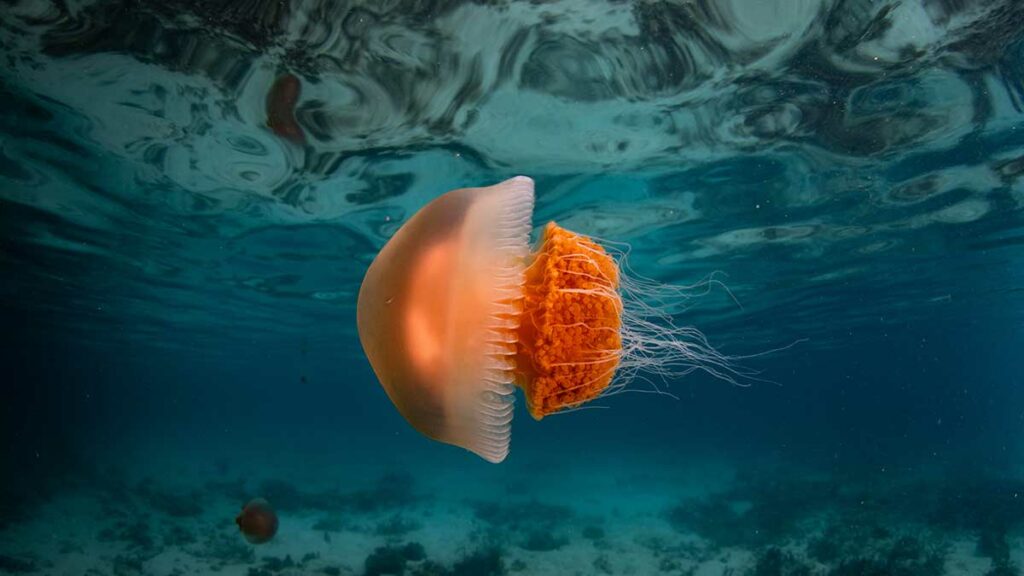
Conservation Efforts and Challenges
It is no secret that the ocean is suffering under many environmental threats. Governments, NGO’s and dive shops are battling hard to protect the golden triangle and preserve it. Tubbataha sets a precedent with strict regulations against illegal fishing and climate change, inspiring other sites like Verde Island Passage, where local authorities are curbing overfishing. Raja Ampat’s protection measures include Marine Protected Areas, while Komodo National Park balances increased tourism with habitat preservation.
Wakatobi and Bunaken Marine Parks excel in their community engagement and eco-friendly practices, combating challenges like coral bleaching and pollution. Sipadan Island, known for its incredible marine life, adopts strict diving quotas to foster coral regeneration but faces issues like littering. Papua New Guinea’s Kimbe Bay and Milne Bay epitomize the fight against climate change and industrial development through research and conservation. The Solomon Islands, enriched with historical wrecks, strive to preserve their heritage while battling coral mining and overfishing.

Responsible Diving in the Coral Triangle
The beauty and biodiversity of the coral triangle can be enjoyed by future generations via collaborative efforts, education, and adherence to best practices. Here are some examples of responsible diving and what more should be done:
Diver Quotas
Places like Sipadan Island have implemented a divers quota, limiting the number of divers per day. This helps minimize human impact on the fragile marine ecosystem and allows the coral reefs and marine life to thrive without constant interference.
Education and Awareness
Dive shops and NGOs provide education on responsible diving practices, such as maintaining good buoyancy to prevent accidental contact with corals, which can cause irreparable damage.
Reef Restoration Projects
Many NGOs run reef restoration projects, offering divers the opportunity to volunteer and actively participate in rebuilding coral reefs. By transplanting coral fragments and monitoring growth, divers can directly contribute to the restoration of damaged areas.
Reef-Safe Sunscreen
Encouraging the use of reef-safe sunscreen is a simple yet impactful practice. Traditional sunscreens contain chemicals harmful to corals; by opting for biodegradable, reef-friendly options, divers can reduce their impact.
Removing Trash
Divers are often encouraged to remove trash they encounter during dives. Some dive shops even organize regular clean-up dives to keep the areas free from debris, contributing to a cleaner and healthier marine environment.
Adopting Eco-friendly Practices
Dive shops and resorts can lead by example, using renewable energy, minimizing plastic usage, and following eco-friendly waste disposal methods.
Dive responsible
Each diver must understand the fragility of the marine environment and adhere to best practices, such as not touching or feeding marine life, using mooring buoys instead of anchors, and respecting local guidelines and regulations.
Conclusion
The Coral Triangle, widely regarded as one of the most stunning dive areas in the world, is proof of the power of conservation and good conduct. The region, which spans a huge seascape, continues to thrive thanks to the ongoing conservation efforts. Divers visiting the area should always dive responsibly. A great way to long term invests in the preservation of the coral triangle is for divers to choose to stay and dive with operators who promote sustainable tourism and diving. If you enjoy diving in colorful warm waters, then the coral triangle is a dive destination for you. With over 3,000 species of fish and 600 species of coral, you will not find a more diverse area.

